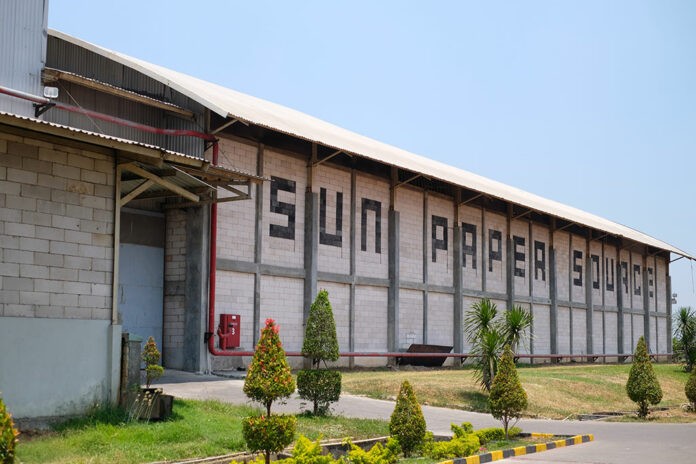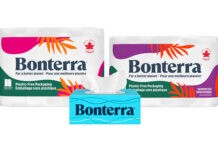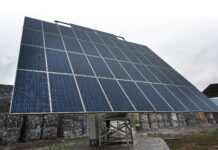
Sopanusa Tissue & Packaging Saranasukes and Sun Paper Source’s state-of-readiness was due to a dynamic business strategy which today sees it trading in over 80 countries and across five continents. TWM spoke to Chief Executive Ventje Hermanto to hear how Covid-19 accelerated the habit of hygiene across the region – and value-for-money tissue products
Ventje Hermanto looks back today from the vantage point of 2021 at what can only be described as the extraordinary year and a half in Indonesian’s tissue business, but also somewhat wistfully to the preceding pre-Covid-19 years.
TWM first visited sister companies Sopanusa Tissue & Packaging Saranasukses and Sun Paper Source, part of SPS Corporate, in 2013, at the company’s 12-acre Sopanusa site and 13-acre Sun Paper plant in Indonesia. It was clear then that the dynamic company was expanding rapidly, and was well placed to benefit from systemic economic and cultural changes underway across the nation, and the Southeast Asian region.
The middle class was growing, consumer needs were changing and increasing, more disposable income was available, and export opportunities were coming on-line across the western Pacific Rim and beyond.
Then Covid broke and new challenges had to be met. They were met, because, as he puts it, the company had been unwittingly gearing up to meet them these past few years. Today from his office in Surabaya, Indonesia, Ventje Hermanto explains that the company’s ambitious growth plans have not been held back by the outbreak of the global pandemic: “The main change this past year and a half has simply been matching supply to the rapid increases in consumption.
“We are seeing huge opportunity to develop tissue production in response to this increase following the outbreak of Covid-19. And it has presented a great challenge as well as opportunity for us.”
The response in the first quarter of 2020 was to start up a paper machine at Sun Paper Source’s Mojokerto, Indonesia-based site, and a second machine was started up a few months later, boosting the company’s paper mills to six with a production capacity of 120,000tpy. At Sopanusa Tissue & Packaging Saranasukes, two paper mills currently produce 45,600tpy.
SPS Corporate has also invested in eight converting machines for the two businesses, all of which are fully-automatic and semi-automated in order to “improve quality and capability both for the local and export markets”. Parent rolls and finished products are now exported to customers in over 80 countries and across five continents, reaching as far as the Middle East and South Africa.
Yet it is the regional tissue powerhouse of Indonesia that remains key. Indonesia produces 750,000tpy of towel and tissue paper, and is the largest T&T producing nation in the Southeast Asia Geographic Zone. In 2020, tissue consumption increased substantially in the retail market due to stockpiling, whilst similarly with the rest of the world it decreased for the AfH due to local and regional lockdowns.
“We are in the retail market, particularly in the local market, and also the AfH sector in both local and export markets – we always see opportunities in every sector,” Hermanto says. Demand for consumer tissue in Indonesia “continues to see positive growth” in 2020as people are increasingly aware of hygiene: “Following Covid we have also been able to expand into new and bigger markets where we have previously not been able to get a foothold, both locally and also abroad. Hygiene has become more of a habit: it’s now a lifestyle for people to wear a mask and wash their hands more frequently. And while the AfH segment had been negatively impacted during this pandemic, we have definitely seen the use of household tissue and the personal daily use of tissue increase.”
The increase in demand for consumer tissue products is a result of more people implementing healthy lifestyle, especially the people who live in the cities and developing areas: “This has created a higher demand for consumer tissue, and it is also being driven by the unusual increase in people’s activities, cooking and dining at home.”
In Indonesia, the population is also increasingly getting used to using facial tissue softpack as a ‘multipurpose’ tissue, which in turn has seen a slight drop in household towel usage. “In other countries in Southeast Asia the biggest increase in tissue use was for products that have previously been used for household tasks, such as toilet, facial and kitchen towel tissue. This demand increase was caused by panic-buying that lead to stockpiling and also several restrictions.”
Private label tissue products have also become “the most saleable item” for the business, compare to branded tissue products for the modern market. “More and more tissue customers are starting to see private label tissue quality as acceptable and good value for money,” he adds.
The businesses are also starting to see “a significant change” in demand for napkin and towel AfH products, as restaurants and hotels start to open up again: “We have seen the closure of some other tissue paper suppliers following the low demand of 2020. Casualties of Covid. But it meant that when the demand started to come back in 2021, we were ready to support it, to grab the opportunities. And we are also exporting even more.”
Does he expect a full re-bound for the AfH market? “It depends on every country’s public policy, especially in terms of how fast a country can distribute the vaccine to its people. When people feel they have the necessary ‘armour’ for Covid-19, then they will start to have more activity in public places. However, I don’t believe the AfH market will recover 100% back to its volume pre- pandemic. It will be recovered 50-70% by 2023/2024.”
The change in people’s hygiene and tissue habits will be lasting however, and a positive for the global tissue and towel market: “We see a permanent behaviour change in everyone due to Covid-19,” he says. “Paper towel demand is increasing and will continue to do so due to people’s increased awareness to wash their hands more often. We also see that toilet and kitchen towel tissue are big opportunities and we are planning to invest more on our converting line for these products.”
China’s Belt & Road initiative also holds further export opportunities for the company. With high ocean freight rates having had a negative impact on the export of lightweight product such as tissue paper, Hermanto says Belt & Road means that some distribution may well be carried out by truck: “We hope ocean freight rates can be adjusted to be back in “competitive” rates, so that the export of tissue paper can go back to previous more sustainable rates.”
“Covid-19 is impacting the economic situation of the world, including Indonesia and Southeast Asia, and it will have lasting repercussions on the industry’s sustainability efforts and margins. Environmental issues remain a main concern in this industry – some people are still reluctant to use tissue paper since the raw material is well-known as coming from a tree. To survive, we have to take care of the environment by reducing the use of energy and fresh water per tonne of tissue paper, increasing recycled tissue paper product portion and to keep providing FSC- certified products for both virgin pulp and recycled grades.”
He adds that a final crucial challenge for the market remains pulp prices: “We have seen our raw material pulp costs increase more than 70% during the past six months. It is getting tougher for tissue producers since the retail price is difficult to be adjusted as the buying power has not fully recovered. At a certain point, if pulp prices keep increasing then the retail price has to be adjusted, just as with other commodities. We believe that in the next two to three years, the growth rate of tissue paper will keep along a positive trajectory. However, it could equally be stable or even start to decrease if there is a significant retail price adjustment.”
































